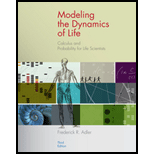
a.
To graph: The secant line to the given function at base point
a.
Explanation of Solution
Given:
The given function is
Method used:
The function and the secant line is plotted using graphic calculator.
Calculations and Graph:

The given function is
The coordinates of base point say, P are
The point at distance
The graph of the function and the secant is shown in Figure (a)
b.
To graph: The secant line to the given function at base point
b.
Explanation of Solution
Given:
The given function is
Method used:
The function and the secant line is plotted using graphic calculator.
Calculations and Graph:

The given function is
The coordinates of base point say, P are
The point at distance
The graph of the function and the secant is shown in Figure (b).
c.
To graph: The secant line to the given function at base point
c.
Explanation of Solution
Given:
The given function is
Method used:
The function and the secant line is plotted using graphic calculator.
Calculations and Graph:

The given function is
The coordinates of base point say, P are
The point at distance
The graph of the function and the secant is shown in Figure (c). We see the secant line tends to tangent line at point P .
d.
To graph: The secant line to the given function at base point
d.
Explanation of Solution
Given:
The given function is
Method used:
The function and the secant line is plotted using graphic calculator.
Calculations and Graph:

The given function is
The coordinates of base point say, P are
The point at distance
The graph of the function and the secant is shown in Figure (d).
We see the secant line tends to tangent line at point P .
e.
To graph: The secant line to the given function at base point
e.
Explanation of Solution
Given:
The given function is
Method used:
The function and the secant line is plotted using graphic calculator.
Calculations and Graph:

The given function is
The coordinates of base point say, P are
The point at distance
The graph of the function and the secant is shown in Figure (e).
We observe that points
Here, the slope of the tangent by definition is
And from the formula as the tangent line is the limiting case of secant line
Thus, the slope of the tangent line is 25.
Want to see more full solutions like this?
Chapter 2 Solutions
Modeling the Dynamics of Life: Calculus and Probability for Life Scientists
- YOUR TURN For the graph of f(x)=x2x, a find the equation of the secant line through the points where x=2 and x=1, and b find the equation of the tangent line at x=2.arrow_forwardFor a person at rest, the velocity v (in liters per second) of airflow during a respiratory cycle (the time from the beginning of one breath to the beginning of the next) is modeled by v=0.85sint/3, where t is the time (in seconds). a Find the time for one full respiratory cycle. b Find the number of cycles per minute. c Sketch the graph of the velocity function. Use the graph to confirm your answer in part a by finding two times when new breaths begin. (Inhalation occurs when v0, and exhalation occurs when v0.)arrow_forwardFind the derivatives of the functions defined as follows. y=2xsec4xarrow_forward
 Trigonometry (MindTap Course List)TrigonometryISBN:9781337278461Author:Ron LarsonPublisher:Cengage Learning
Trigonometry (MindTap Course List)TrigonometryISBN:9781337278461Author:Ron LarsonPublisher:Cengage Learning Calculus For The Life SciencesCalculusISBN:9780321964038Author:GREENWELL, Raymond N., RITCHEY, Nathan P., Lial, Margaret L.Publisher:Pearson Addison Wesley,Algebra & Trigonometry with Analytic GeometryAlgebraISBN:9781133382119Author:SwokowskiPublisher:Cengage
Calculus For The Life SciencesCalculusISBN:9780321964038Author:GREENWELL, Raymond N., RITCHEY, Nathan P., Lial, Margaret L.Publisher:Pearson Addison Wesley,Algebra & Trigonometry with Analytic GeometryAlgebraISBN:9781133382119Author:SwokowskiPublisher:Cengage


